Outdoor Tile Corner
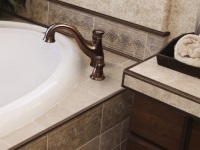
When cladding the walls with ceramic tiles, special attention is paid to the design of protruding corners. To make them neat and safe, you should use special external corners for tiles. The modern market offers a wide range of profiles for tiles, which differ in size, color and design.
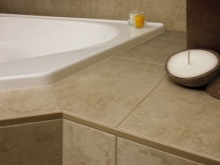
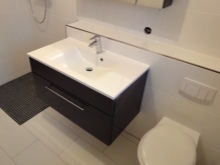
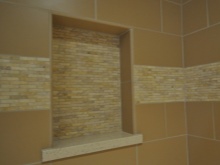
What are necessary for?
The main purpose of corners - decorating the corners of the wall. Thanks to them, the tiled surface looks more accurate.
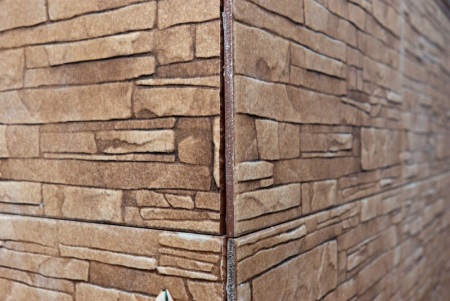
In addition, the process of laying tiles is greatly simplified:
- No need to trim the edges of the tiles at an angle of 45° for further docking;
- The corner has a groove, which hides all the irregularities, forming a perfectly straight line;
- It is easy to clad rooms with a complex configuration, in which there are many ledges and curves.
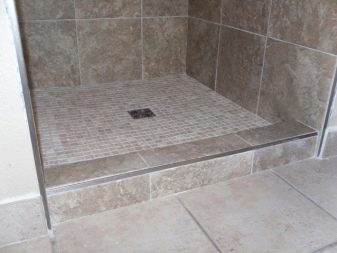
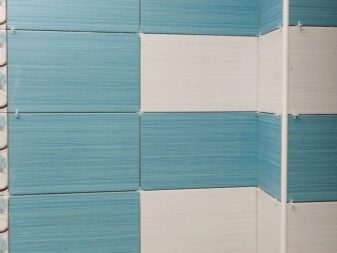
Another important advantage of exterior corners is that they provide additional protection against moisture, so the tiles will last much longer. It is also worth noting the decorative properties of the profiles, because they give the room an aesthetic, and harmoniously complement the tiles.
Material
For the manufacture of exterior corners, several materials are used: metal, plastic and ceramic. Each of them has its own advantages, and the rules of use, so it is recommended to consider the profiles in more detail.
- Ceramic corners will be a good addition to the interior. The most advantageous look products, painted in silver or gold color. Among the huge range you can choose a profile, the surface of which will fully imitate the design of tiles, and it can have its own attractive pattern.
- Plastic materials are made of perforated polyvinylchloride profile. They are available in a wide range of colors, so it is easy to choose a suitable shade. Plastic exterior corners are flexible and very lightweight, so they are easy to install. Unlike other profiles, PVC can be installed after wall cladding, using sealant.
- Metal corner Has high strength and durability. Aluminum is most often used for the manufacture of profiles, as it allows you to create reliable and at the same time lightweight elements. But also on sale are materials made of brass, stainless steel, chrome-plated or nickel-plated. The surface of the outer corners are painted in different colors, but most often they imitate gold, platinum and silver.
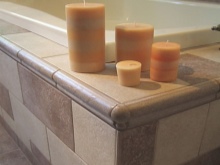
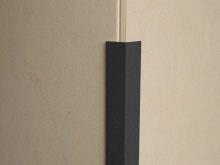
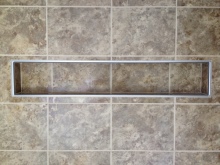
Types
Profiles for decorating exterior corners are presented in a huge assortment. They differ in size, thickness, method of attachment, material, color and decor.
Depending on the material, products are divided into 3 types:
- Soft. For their production, PVC is used in combination with silicone, which is applied to the edges of the profiles. They are universal, since they are well suited for tiles not only with a smooth surface, but also with a relief.
- Rigid. Have the greatest strength and reliability. The corners are made of ceramic and various metals, including alloys. Often the surface of metal profiles are not painted, but still on sale you can find models not only in gray, but also in gold, bronze, platinum or silver. As for the ceramic, their color scheme is quite diverse.
- Semi-rigid. They are made of durable plastic, but unlike soft models, they do not have silicone overlays. The degree of flexibility of semi-rigid corners is much lower than that of soft, but this factor only simplifies their laying. The most popular models are white, and the most rare - black.
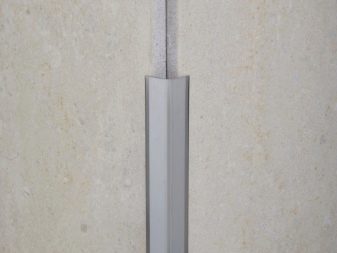
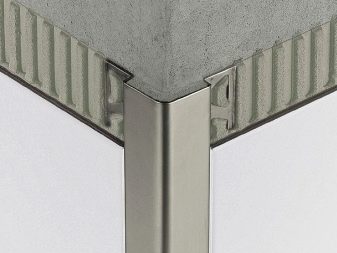
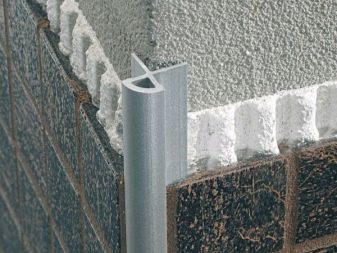
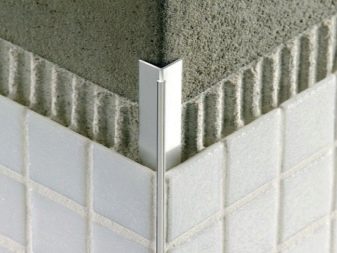
The length of the profiles for the outer corners varies between 2.5-2.7 m, so you need to trim the material when finishing walls. The width of the groove can be from 6 to 12 mm. The size of the base of the product, which is located directly under the tile, depends on the material, and can be 20-40 mm. As for the method of attachment, the outer corners are usually mounted under the tiles on the tile adhesive in the course of tiling works, but there are also models that can be glued to the surface with a sealant.
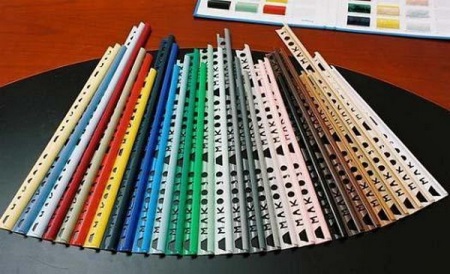
How to choose?
To end up tiled wall corners gained aesthetics and high strength, you need to know how to choose the right external profile. First of all, you should decide on the material. Most often use semi-rigid PVC products, but in some interiors, such as high-tech or loft, metal models will look good.
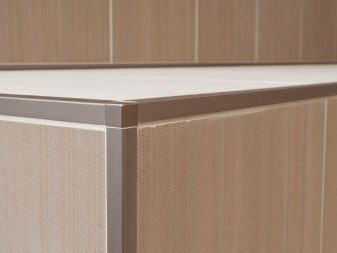
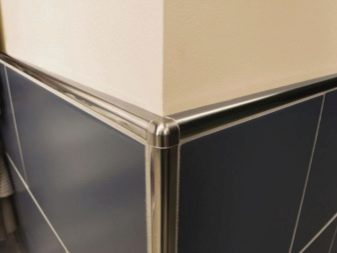
The color of the corners should match the tiles, or be lighter. The white profile is considered a classic option, as it is in harmony with tiles of any shade. For sophisticated interiors or laying panels you can find corners with a pattern or original texture.
When choosing profiles for the design of external corners, it is necessary to consider the thickness of the tile, because it must freely enter the groove, but that there is no gap. If you choose a corner without a groove, its height must match the thickness of the tile, so that when tiling the surface formed a solid corner without protrusions and depressions. In addition, before buying products, it is important to make sure of their quality - they must be even, with the same thickness of material and without damage.
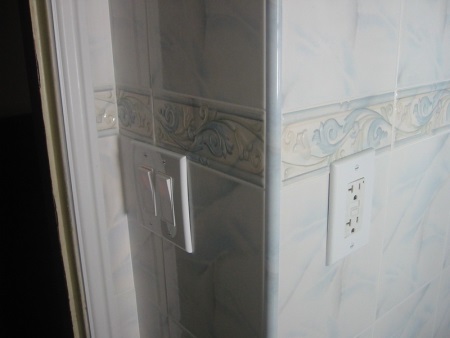
Laying
External corners are installed during the laying of tiles, and they do not need to be pre-fixed to the wall. The first thing to do is to level the surface for further tiling. Then prepare an adhesive solution for tiles and apply it to the corner, which is planned to tile. The thickness of the layer should be the same as for fixing the tiles. The profile for forming a corner is placed against the treated surface and pressed down so that the perforated base of the product is securely fixed with mortar.
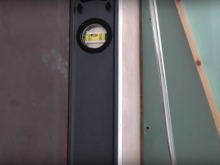
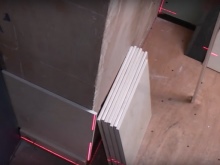
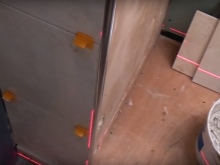
After fixing the outer corner, you can start tiling the walls. If one wall is already tiled, then the outer edge of the outer corner should be flush with the tiles, in another case, you must install the product with a small overhang, equal to the width of the tiles. Start laying tiles from the profile, with its perforated base under the first vertical row of facing material. Depending on the type of installation, the tiles should be trimmed in advance, and it is important to take into account that its part will be in the groove of the profile. The tiling must be carried out very carefully so as not to move the outer corner, otherwise the entire finish will "float".
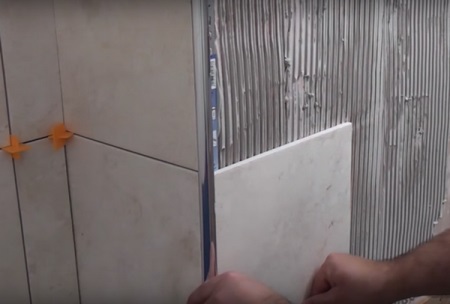
Often the profile must be trimmed to the correct size, and this should be done before it is laid, and only after a thorough tiling of the corner. During the repair, you should constantly check the correct placement of the outer corner and, if necessary, correct it. This will help level and universal angle. After the full tiling of the surface in some cases, there are seams that need to be filled with grouting mortar. In other cases, additional treatment of external corners is not required.
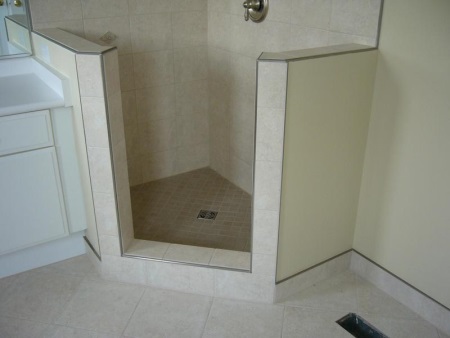
On how to install corners for tiles with your own hands, see the following video.




